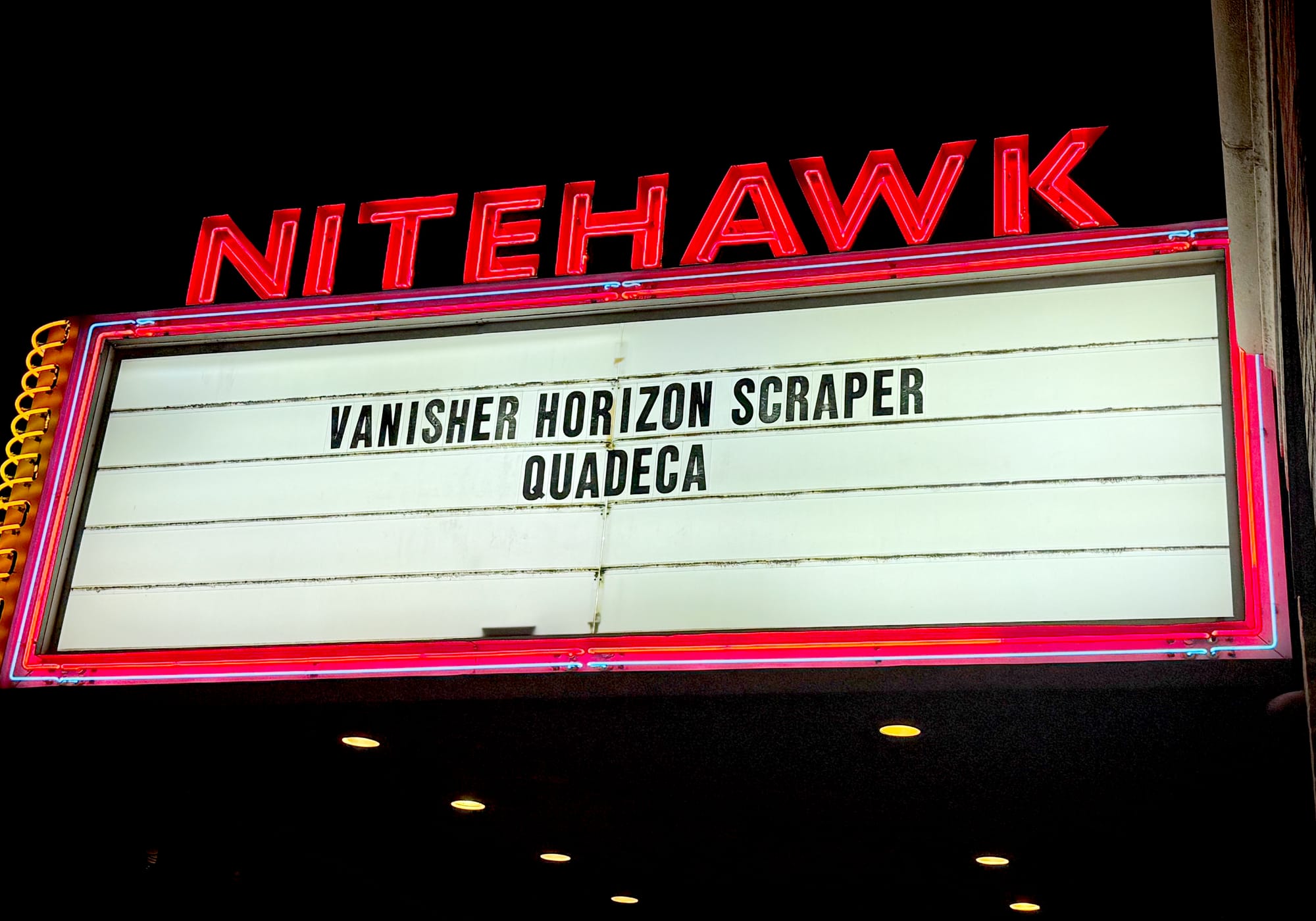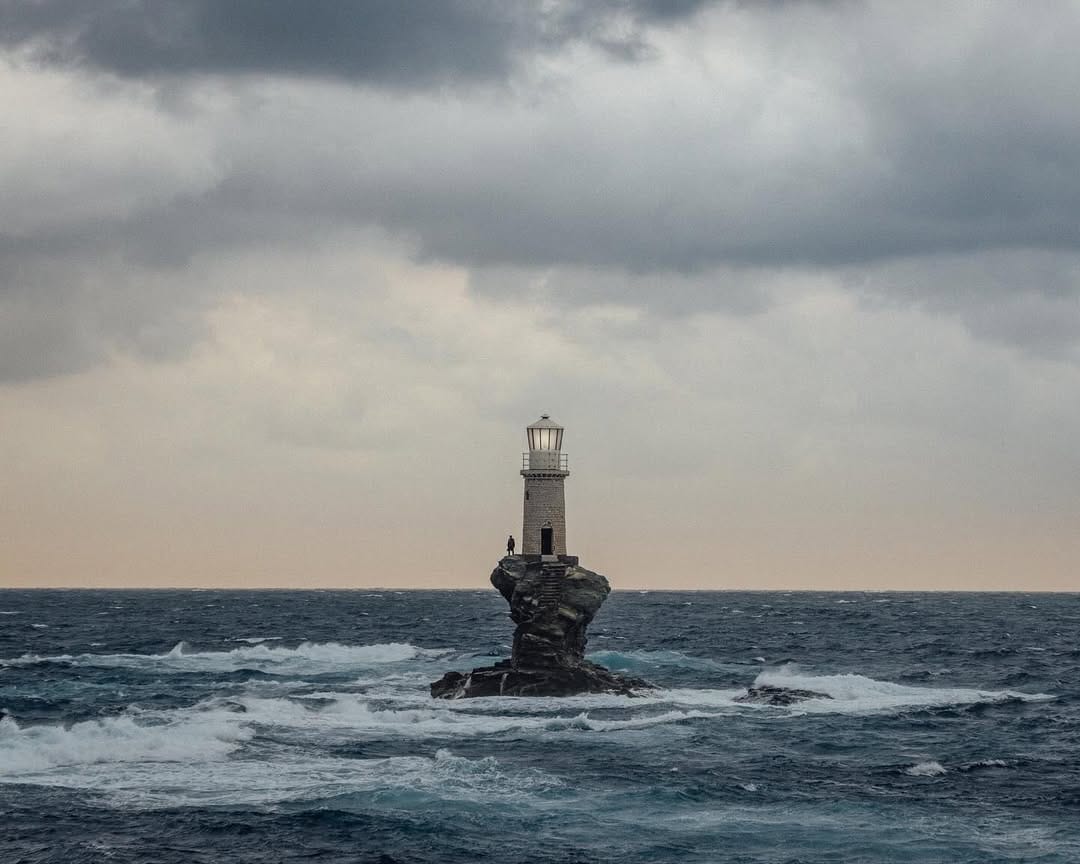Quadeca sees the ocean like the classic romantic painter Caspar David Friedrich. As depicted in the famous painting Wanderer above the Sea of Fog (1818), the unknowable, dynamic, almost violent nature of the sea is irresistible. It’s full of energy, of wind, of noise, of life; it’s also untethered to the customs of humans.
“It’s not really bound to a place,” said Quadeca at an exclusive screening of his forthcoming album film VANISHER, HORIZON SCRAPER at New York City’s Nitehawk Cinema on July 21. The natural beauty and scariness come together to make something truly sublime. Thus, when it came to designing a soundscape for this idea of an ocean’s movement, he believed a full visual album was the best way to achieve this.
VANISHER, HORIZON SCRAPER is a 70-minute epic that reads like a newer, almost spiritual adaptation of The Odyssey. Quadeca becomes a nameless lone traveler, sailing his rickety boat alone across the globe in search of knowledge and beauty. It’s a bit more romantic than Homer’s epic — he doesn’t resist the magnetic pull of the ocean, often retreating into the waves at different parts of the film — but it uses the common motifs of the sea’s call to adventure, the hunger to learn different cultures, and the passage of time to craft a narrative of self-discovery and what it means to have freedom.
By segmenting his record into different times of day, Quadeca weaves two underlying narratives together: on one hand, we see the world around him suddenly shift from tattered tarps and overgrown grass to lighthouses, ornate cathedrals, modern-day shacks, man-made waterways, and enormous golden statues — a symbol of the development of human civilization as its people become more entwined. But as the music gradually shifts with time, the movie reveals itself as the life cycle of Earth, mapping it from birth to death.

The film begins at a misty daybreak, with crashing waves and tumbling winds bashing against a rocky shore. The scene is barren: the sky is a flat, cloudy gray; the tall grasses of yellow and green rustle; and no signs of life are present. Suddenly, the cinematic orchestral arrangement of “NO QUESTIONS ASKED” causes all objects in frame to spring to life. The sound design is nothing short of marvelous – textured, weighty, and full of woodwinds and choral chants, it perfectly mirrors the feeling of getting knocked over by waves of water and wind.
Plot-wise, Quadeca constructs his own interpretation of a creation myth: first, there was water. Then it parts, and land emerges. Then, the grasses grow, and nature appears. Once the man (played by Quadeca) gets created, the secondary items like shelter — in this case, a crude, tattered tarp — get built. The music continues building momentum until “RUIN MY LIFE” ends, and the screen harshly cuts to black.
As the day turns to night, the film grows darker, and the music shifts from an easy-going, folksy and Latin jazz-inspired groove to a sunken, melancholic hip-hop run, and then an electronic chaotic frenzy.
Late morning, for instance, finds Quadeca lounging on his boat, basking in the Sun and commanding his boat as he accepts his call to adventure. The music shifts to a quieter, gentler tone with “GODSTAINED”, undoubtedly inspired by Spanish acoustic music, Latin jazz, folk, easy listening, and R&B. One can hear the water woven into the production, either by the wavy beat, the splashing noises and seagulls cawing subtly in the background, or the sprightly woodwinds that give the track a breathy, fresh quality.
The peace continues into tracks where Quadeca travels to gorgeous scenes around the globe, briefly pausing to take in its beauty before getting on his boat again. Later on, however, Quadeca is literally in the pits during “I DREAM ABOUT SINKING”, a fraught, downbeat hip-hop track about crushed dreams and dealing with life’s uncertainties. It’s the first time we see an American-style ranch house in the film, and it’s half-sunken in the mud. Quadeca, also waist-deep in the Earth, tugs on a never-ending rope — a visual expression of frustration and stagnation in modern times. The sun eventually sets, and as the moon rises and pulls the tides closer, Quadeca begins to spin out of control, entering nightmarish, apocalyptic territory.
The pacing in VANISHER, HORIZON SCRAPER achieves release in its final act: midnight and daybreak.
“THE GREAT BAKUNAWA”, featuring Danny Brown as the Sea Monster, plummets into chaos in the way the “Circe” chapter in James Joyce’s Ulysses does. (Coincidentally, another adaptation of The Odyssey that operates on a 24-hour cycle.) The song flips to a completely different vocabulary, dialing up the percussion, background chorus, tempo, and volume to the max. The camera, now shooting in a black and white filter, never stops shaking, making it hard to focus on any subject at the beach bonfire.
Lyrically, it’s Quadeca’s most whimsical track, departing from this established narrative of exploring the human condition to instead retell a popular Filipino folk tale of the Bakunawa, a sea dragon that almost causes the apocalypse by eating the moon. Inspired by the furious effort by the human race to ward it away with drums, he fills the air with as much noise as possible, accentuating music’s powerful, spiritual properties as a force that brings people together.
This dramatic confrontation fizzles out once the dragon is soothed and the sun rises again, lowering the violent tides. “FORGONE”, an eight-minute piano ballad, finds him sopping wet and pensive on the shore, tired yet still ultimately drawn to the pull of the waves. The cycle begins again, and he once again sets out to learn more about the world.
Perhaps what is most effective, and what shows Quadeca’s ingenuity in direction and composition, is the incorporation of global music and visuals throughout the record. While looking for locations to film, he sought verdant, ornate, and almost isolated structures around the world to invoke a “spiritual aspect of utopia,” or an “imaginary land of total nature.” Splicing shots of the gothic abbey of Mont Saint Michel with the constructed serpentine rivers of the Philippines, the mid-century ranch house, the moonlit beaches, and the giant Christian cross flashed in the spiritual swelling finale “CASPER”, his utopia seeks to bring people together, presenting peace as the result of exchanging knowledge, folklore, art, and friendship.
His music is equally loaded with cross-cultural pollination, stitching together Western classical with Latin Jazz, Filipino poetry, Indian percussion, English folk, hip-hop, and more. His collaborations with Danny Brown and Maruja (whose impressionistic, post-rock, and poetic styling particularly shines in “CASPER”) also allow him to incorporate other perspectives in composition, embedding some of their sounds into the record’s DNA.
In the cycle of a day, his lone traveler character grows from a crude drawing of a person to a learned, spiritually enlightened, and complicated man — an Odysseus in a young, modern form.




What do you think?
Show comments / Leave a comment